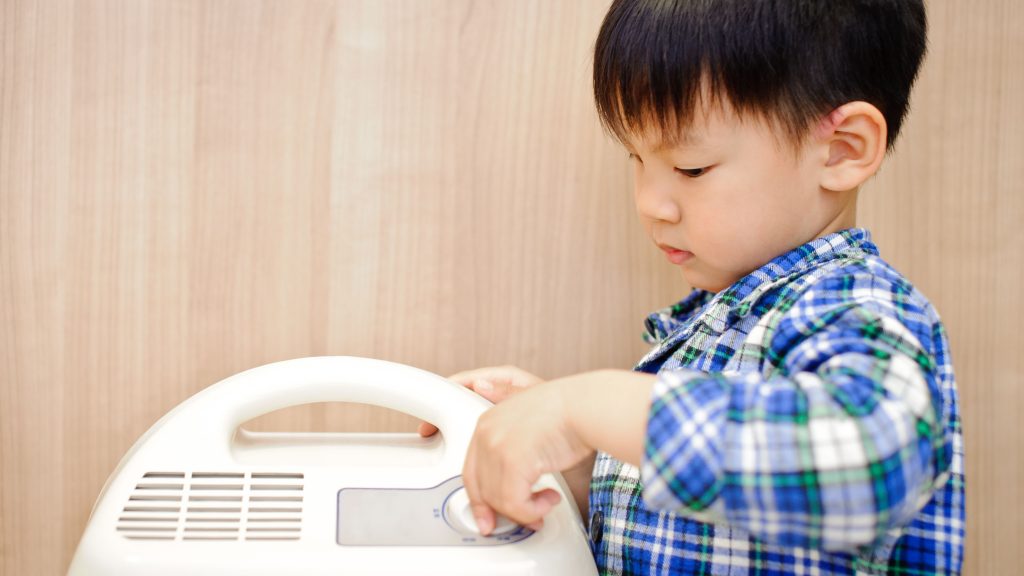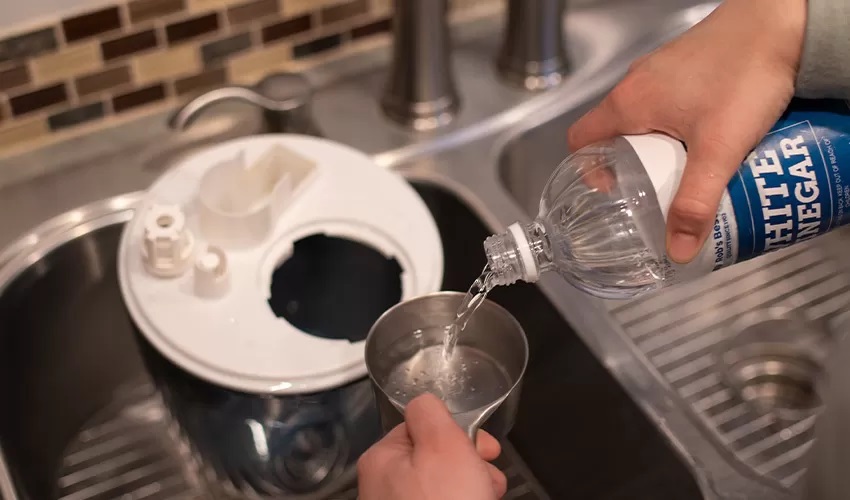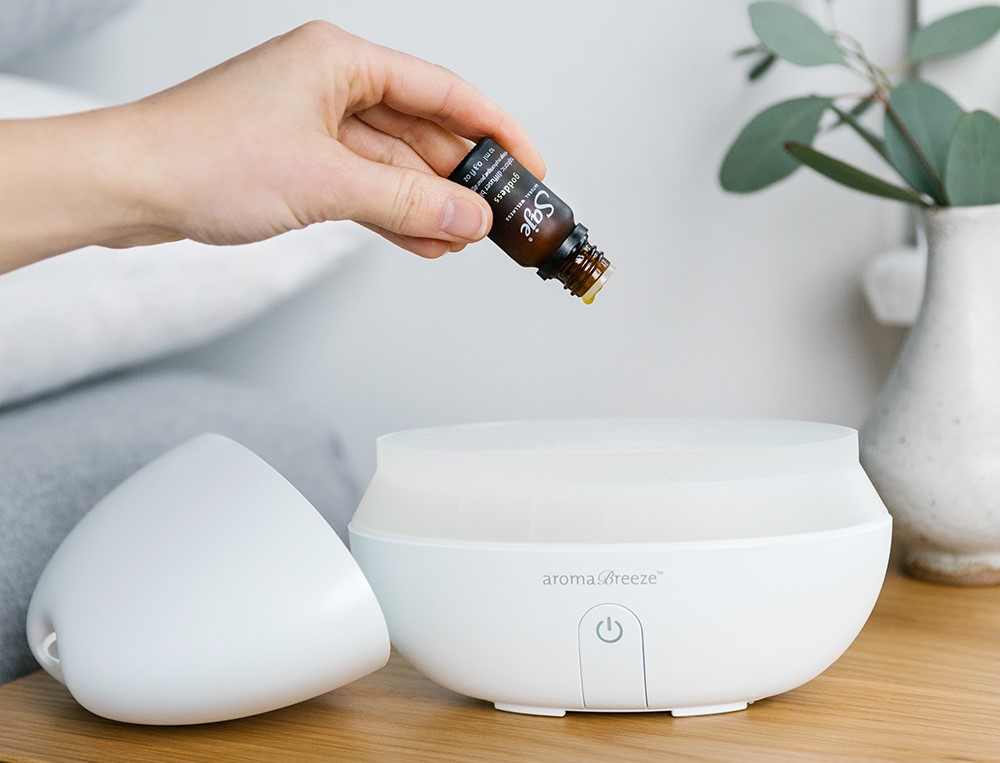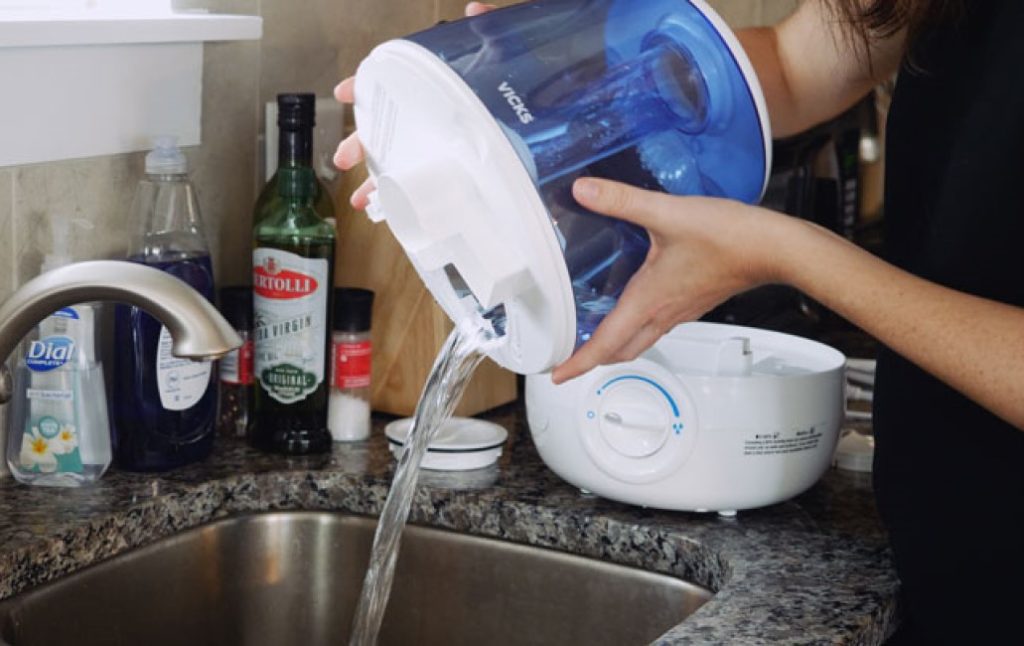

There will come a time in the year when you will wake up with a scratchy throat, endless sneezing, or dry lips and you will think of a humidifier and a dehumidifier. Both devices improve the indoor humidity level. Maintaining the right level of humidity in the home can be challenging. When it is too low, you will experience static electricity, dry skin, and dry hair and when it is too high you will have cases of mold.
Humidifier vs. dehumidifier; which one do you really need? Well, the ideal humidity for a home is between 30% and 50%. If your house is below 30% then you will need to get a humidifier. If it is above 50% you will need a dehumidifier. Read on for some more information on both devices, from the many types available on the market, to their functionality and benefits.
A humidifier is a device that adds moisture to the air in a room. It is commonly used during winter when the air is too dry. There are different types and sizes of humidifiers from small portable ones to large and static ones with a capacity of 1.3 ounces and above.
The amount of moisture in the air can range anywhere between 0 to 100%. You can feel a huge difference during summer and winter. During summer, you feel hotter because sweat doesn’t evaporate from your skin as fast. This is because the air is already filled up with moisture.
During winter, sweat evaporates fast from the skin because the air is dry. This is why you feel colder and drier. A humidifier releases moisture into the room, to increase humidity levels reducing the harsh effects of low humidity.
Most people prefer to use humidifiers in the rooms they spend much time in; the living area and bedrooms. When they add moisture into the air, they ease the health issues caused by low humidity like asthma, chest congestion, dry and itchy throat, dry lips, dry skin and hair, and several respiratory issues.
When the humidity in your home goes below 30%, you will need a humidifier. You can get a hygrometer if you are keen on having the correct humidity levels in your home. Also, if it gets to that time of the year when the symptoms start to show, then you’ll know you need a humidifier.
Evaporative and ultrasonic humidifiers are both cool mist humidifiers. An evaporative humidifier features a wick (a certain type of cloth) and a fan. The wick absorbs water from a storage container then the fan blows on its surface, causing the water to evaporate into the air. You can use an evaporative humidifier as a makeshift air conditioner by using cold water which will help lower temperature quickly and effectively.
Ultrasonic humidifiers, on the other hand, use either a solid or membranous diaphragm that vibrates at ultra-sonic range to break down water into tiny droplets. A fan then blows the tiny droplets out as fog. These humidifiers are highly preferred for their quiet operation. The ultrasonic vibrations are outside the human range of hearing.
Warm mist humidifiers are essentially steam humidifiers that simply boil water and release the steam into the room. You can add substances like medicinal inhalants, anti-bacterial compounds or aromatic additives into the water to improve the air condition in your home. Warm mist humidifiers are a lot quieter than cool mist humidifiers and they may make you feel warmer during winter.
Cool mist humidifiers release a cool soothing mist into the air to increase humidity levels. They are the better option if you have children and pets because they don’t involve any heat. The TaoTronics Humidifiers, 4L Cool Mist Ultrasonic Humidifier remains the most acclaimed cool mist humidifier out there. It can be used anywhere in the home, including the baby’s room owing to its quiet operation. Its LED display and humidistat set it apart from many other models within its range.
A dehumidifier is a device that takes away moisture from the air. Any time you ponder on the difference between a humidifier and a dehumidifier just remember it’s all in the names. A de-humidifier de-humidifies.
A dehumidifier features a collection tank into which the moisture it has stripped from the air pools in. You need to empty and clean this tank regularly.
Most dehumidifiers function in two main ways: refrigeration and absorption. Refrigeration is when a dehumidifier first cools the air to remove excess moisture, then warms it again before releasing it into the room. As for absorption, moisture from the air is absorbed into the material and is taken out.
If your room has condensation on the windows or it is too damp with mold on surfaces, then it is too humid. A dehumidifier will help dry out the air and maintain lower humidity levels. One thing people don’t know is that respiratory problems can also get aggravated by high humidity levels.
If you have allergies to dust mites, musty smells, and mold you are likely to suffer when the humidity levels in your home are too high. This is when the humidifier vs. dehumidifier for allergies debate hits home. The easiest way to determine which of the two devices you need is to establish what is causing your allergic reaction. If you tend to have an allergic reaction during summer, you definitely need the best dehumidifier.
There are three main types of dehumidifiers and they include;
This is the most popular type. It works best when the temperature is above 65 degrees F. The dehumidifier works by pulling moist air with a small fan over a refrigerated coil. The moist air then condenses and drips into a collecting space. The hOmeLabs 1,500 Sq. Ft Energy Star Dehumidifier remains the most popular refrigerant dehumidifier. It can remove up to 22 pints of moisture in a space as large as 1500 square feet. It is super easy to use and will look right at home in your modern space.
These are also known as absorption dehumidifiers. They feature materials that absorb moisture from the air easily. The desiccant/material is rotated through the area on a belt. One end of the system is heated to strip moisture from the material. If you live in an area that experiences high humidity and low temperatures, this is the type of dehumidifier you should get.
Whole-house dehumidifiers work in 2 ways. Some models are designed to be installed directly onto your HVAC system and dehumidify the air as it flows through the air ducts. These usually require the help of a professional to install. Other models are portable and large enough to dehumidify a large space. These install easily as they normally just require plugging in.
To determine what you need, you must identify why you need either of the devices. Here are some common reasons for needing a humidifier or a dehumidifier.
During winter, the air is usually dry and cold. This may aggravate respiratory problems or dry out your hair and skin. To prevent or ease the symptoms, you should invest in the best humidifier for winter.
Humidifier vs. dehumidifier for cold? Well, if you experience frequent colds, then it means the humidity levels in your home are too low. A warm mist humidifier can help you maintain the correct levels of humidity as well as warm you up if the temperatures are too low.

You can get humidifiers or dehumidifiers for the different rooms in your home. Most people prefer to have the devices in the rooms they spend most time like the living or lounge area, and bedrooms. Some people opt for whole-house models for convenience. Having them in different rooms allows the home’s occupants the chance to control the humidity levels according to their desire.
| Humidifier | Dehumidifier | |
| Functions and uses | Adds moistures into the air to increase humidity levels | Removes moisture from the air to reduce humidity levels |
| Versatility | Some models can be used with additives like medicinal inhalants and essential oils. | Some types like the ionic membrane can be used for water filtering and chemical engineering. |
| Durability | Last long with Regular cleaning and maintenance | Last long with Regular cleaning and maintenance |
| Price | Affordable | Averagely priced |
You should get a humidifier if; you are experiencing colds and sinuses frequently, your respiratory issues have been aggravated or according to your hygrometer, the humidity level in your home is below 30%.
You should get a dehumidifier if; your home has musty smells, dust mites, and your allergies or respiratory issues have been aggravated due to high humidity. If your hygrometer shows the humidity level in your home is above 50% then you need a dehumidifier.
The correct humidity level is crucial to well-being in the home. The humidity level in your home shouldn’t go below 30% or above 50%. You can get a hygrometer to monitor the humidity levels in your home. Better yet, you can get a humidifier or dehumidifier with a built-in humidistat to maintain the correct humidity level in your home.
Humidifier vs. dehumidifier, which one should you buy? We have provided all the information to answer this question. During summer, it is hot and you are likely to experience dust mites, mold, and musty smells. In this case, you will need a dehumidifier. During cold winter days, the air is likely to be dry and you will experience dryness of the skin, hair, and lips. Your colds and sinuses will also be worse. In this case, you will need a humidifier.





